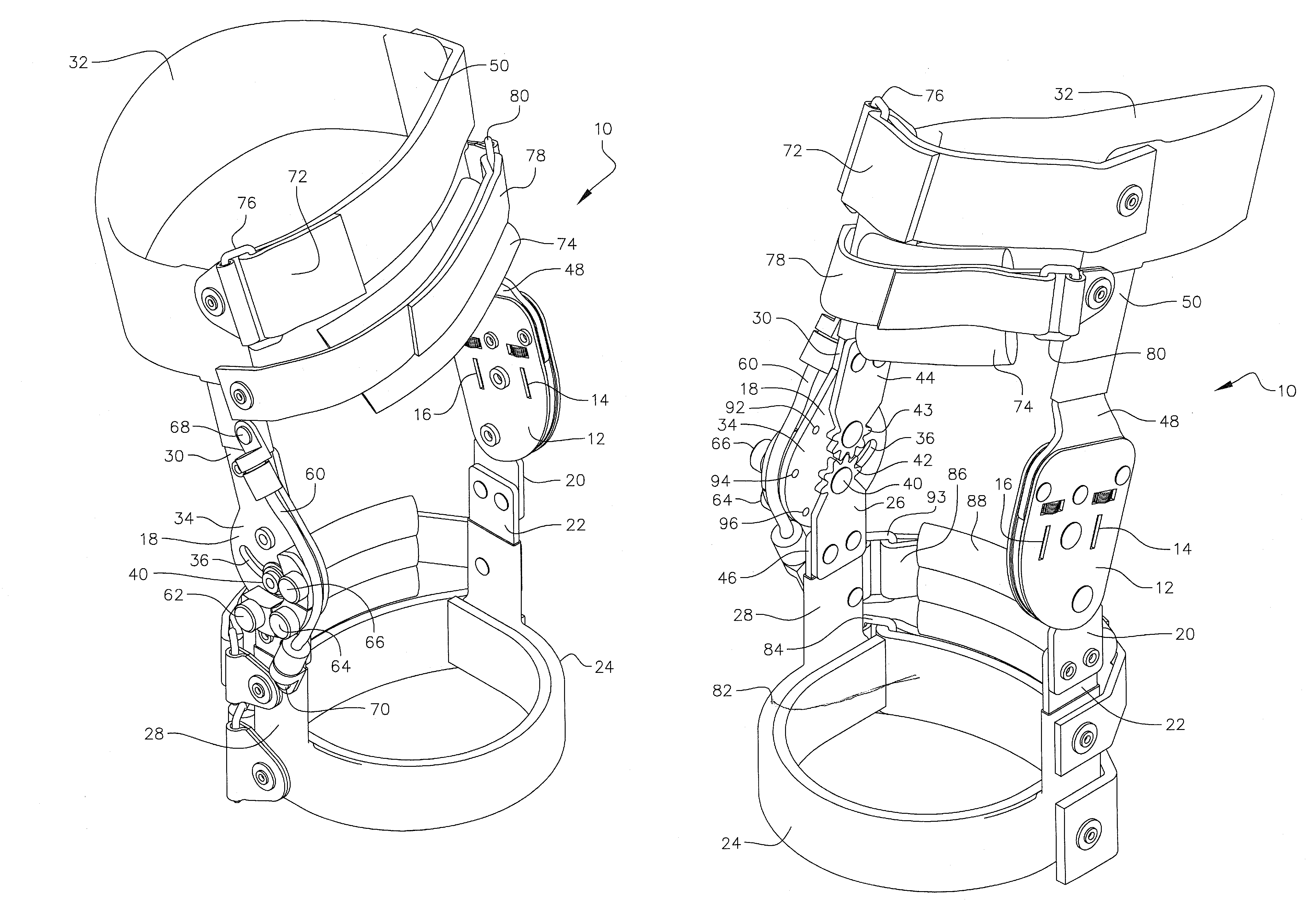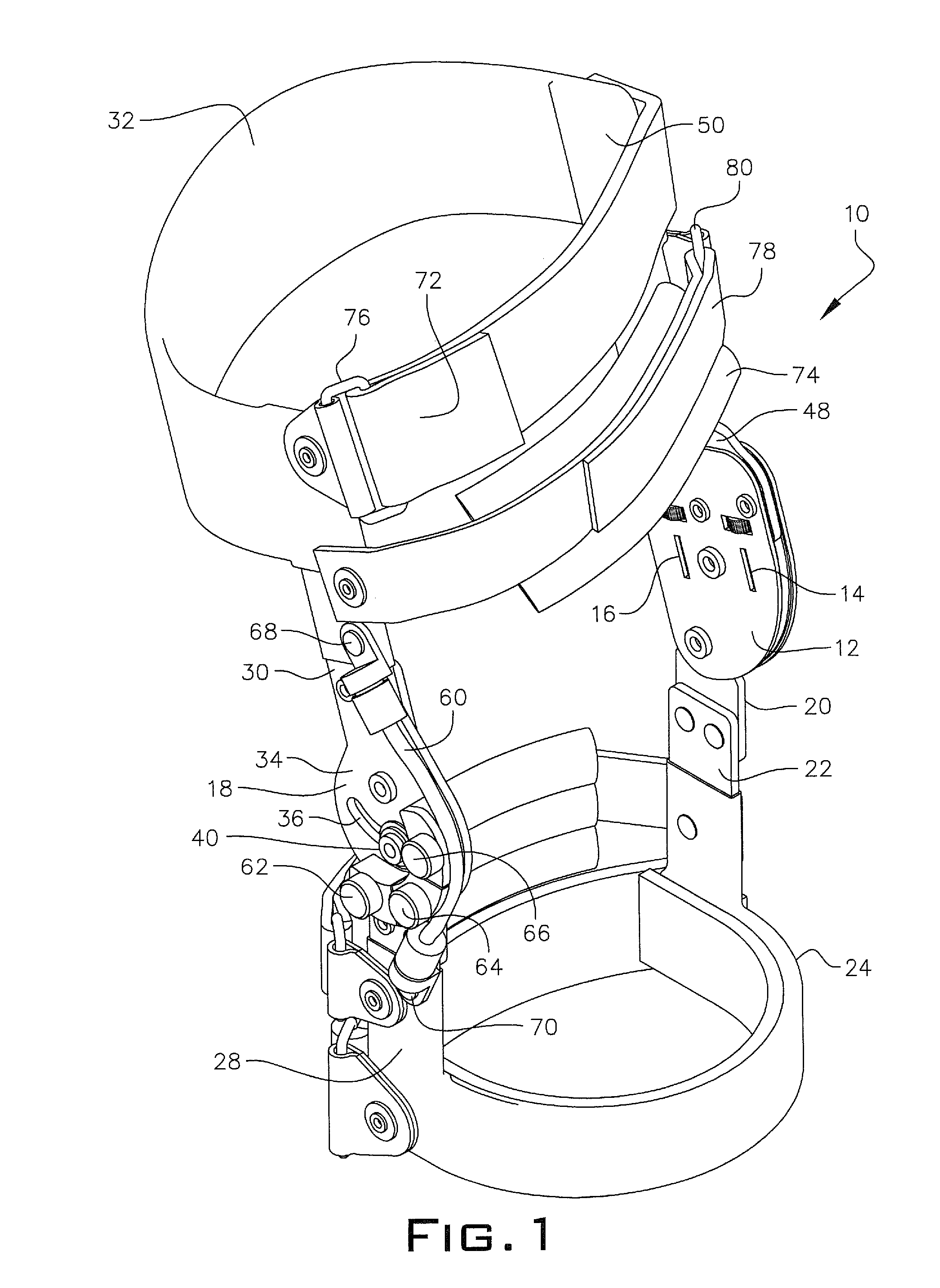Osteoarthritis knee orthosis
a knee joint and orthosis technology, applied in the field of knee braces, can solve the problems of joint pain and swelling, limitation of joint mobility, diminished joint space, etc., and achieve the effects of balancing joint space, improving knee joint alignment, and easy management of controls
- Summary
- Abstract
- Description
- Claims
- Application Information
AI Technical Summary
Benefits of technology
Problems solved by technology
Method used
Image
Examples
Embodiment Construction
[0031]Throughout the following detailed description the same reference numerals refer to the same elements in all figures.
[0032]Referring to FIGS. 1 and 2, the osteoarthritis knee orthosis 10 (hereafter identified as OA), has a medial unicentric hinge 12 with flexion stop 14 and extension stop 16 at any setting. The medial unicentric hinge 12 is substantially parallel to a lateral polycentric adjustable tension offloading hinge 18. The bottom end 20 of medial hinge 12 is attached to a first upright member 22 integral with a rigid knee ring 24. A lower gear plate 26 of lateral hinge 18 is attached to a second upright member 28 integral with knee ring 24.
[0033]An upper arm 30 of the lateral hinge 18 connects at an upper end to a semi-rigid upper thigh cuff 32. A lower portion of the lateral hinge broadens out to a slotted hinge connector plate 34. A slot 36, in connector plate 34 contains a transverse shaft on rivet 40. The rivet 40 attaches a first star gear 42 to an inside surface o...
PUM
 Login to View More
Login to View More Abstract
Description
Claims
Application Information
 Login to View More
Login to View More - R&D
- Intellectual Property
- Life Sciences
- Materials
- Tech Scout
- Unparalleled Data Quality
- Higher Quality Content
- 60% Fewer Hallucinations
Browse by: Latest US Patents, China's latest patents, Technical Efficacy Thesaurus, Application Domain, Technology Topic, Popular Technical Reports.
© 2025 PatSnap. All rights reserved.Legal|Privacy policy|Modern Slavery Act Transparency Statement|Sitemap|About US| Contact US: help@patsnap.com



